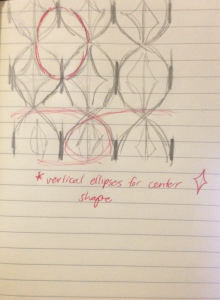I looked at Marc Adrian’s Computer Poem, Text I, from 1963. This was a randomized, computer-generated poem of black text on a white background. The poem was made using a simple method which randomized the selection of specific words, (words that could be read the same in English and in German) and the font size and location of the words on the canvas. I thought this piece was interesting because, in Adrian’s words, “it allows the spectator to find [their] own meanings in the association of words more easily, since their choice, size, and disposition are determined at random.” I also thought it was intriguing that poetry commonly seems quite personal, and based on experiences and influences of human beings. However, in this piece, the viewer is the one creating the personal aspects and personal meaning due to the vagueness and open-endedness of a randomly-generated computer-made poem. I think Adrian was right to keep the font and colors very stark and straightforward. However, I wish the conceptual side of the words chosen (able to be read in English and German) was a bit more interesting. I don’t think that concept is open-ended enough to give viewers power to make their own connections with the words. Also, Adrian experienced the end of WWII and the terrifying events of the Nazi regime, which motivated him to turn to pieces of “rationality, analysis, and multi-media” which is in some ways shown in this particular piece, through its multi-media blend of poetry, computation, and visual art.
http://glia.ca/conu/digitalPoetics/prehistoric-blog/2008/08/20/1963-marc-adrain-text-i/

![[OLD FALL 2017] 15-104 • Introduction to Computing for Creative Practice](https://courses.ideate.cmu.edu/15-104/f2017/wp-content/uploads/2020/08/stop-banner.png)


